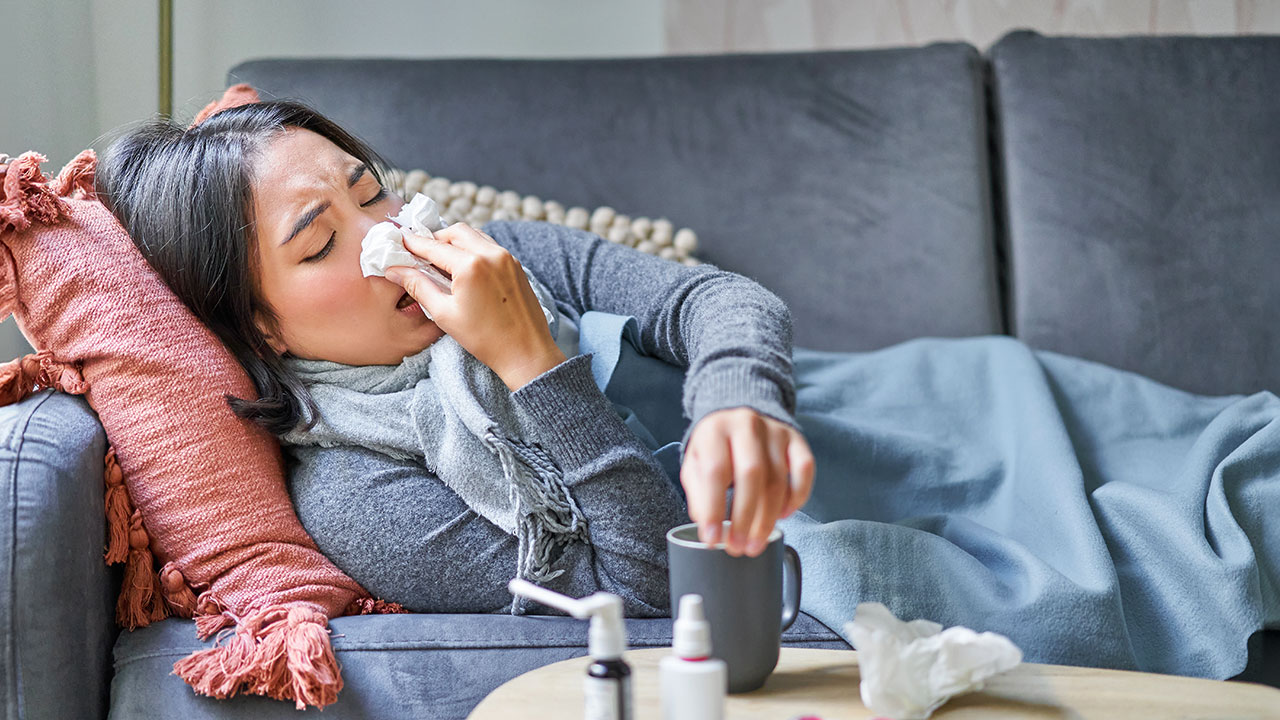
Medicine Cabinet
By Teodoro B. Padilla

Last week, many public and private schools across the country suspended face-to-face classes and shifted to alternative learning modalities amid a rise in influenza-like illness (ILI) cases among both adults and children.
ILI refers to a respiratory infection caused by various bacteria and viruses. A person is suspected of having ILI when they develop a fever of 37.8°C or higher and a cough that began within the past 10 days.
“ILI cases occur throughout the year in the Philippines, typically peaking from June to January, coinciding with the rainy season,” said infectious disease specialist Dr. Rontgene Solante during a special edition of the Philippine College of Physicians (PCP) Health Forum titled “Fighting Flu Together: Protecting Us All.”
Citing Department of Health (DoH) data, Dr. Solante reported 121,716 ILI cases from Jan. 1 to Sept. 27. Most cases (27%) involved children aged 5 to 14 years. Almost half (45%) were caused by the influenza A virus, followed by rhinovirus (14%) and enterovirus (12%). COVID-19 accounted for only 1% of ILI cases.
He noted that 9,649 cases were reported from Aug. 31 to Sept. 13, 17% higher than the 8,261 cases reported two weeks earlier. “This increase follows the usual seasonal trend and remains within expected levels,” he explained.
“The weekly national average of 4,000 to 5,000 ILI cases has reached the alert threshold but is still below the epidemic threshold of over 6,000. The DoH continues to closely monitor the situation,” he added.
Regions I, II, Calabarzon, and Mimaropa have exceeded the epidemic threshold at least twice in the past four weeks, accounting for 28% (33,856) of total cases. Regions V, VII, and BARMM also recorded the highest increases compared to the same period last year.
According to Dr. Solante, population density, reduced mask use, and low vaccination coverage particularly among vulnerable groups may have contributed to these trends.
He warned that older adults are at greater risk of complications such as pneumonia, cardiovascular problems, and worsening of chronic respiratory diseases. DoH data from 2013-2023 showed that Filipinos aged 60 and above consistently have the highest ILI case fatality rates. Fortunately, these have remained below 1%, except in 2021 when rates rose to 1.22% due to the COVID-19 pandemic.
Dr. Solante urged all Filipinos aged six months and older to receive annual influenza vaccination, ideally in March or April to ensure protection before flu season peaks in August or September. He also recommended the pneumococcal vaccine for those aged 15 to 49 and adults 50 and older with comorbidities, as well as the respiratory syncytial virus (RSV) recombinant vaccine for individuals 50 to 74 with comorbidities and everyone 75 and above.
“The pneumococcal vaccine helps prevent Streptococcus pneumoniae infection, a common secondary bacterial infection in influenza that can cause severe pneumonia and death. Meanwhile, the RSV vaccine protects against severe illness, especially in infants and older adults,” he explained. “Vaccines not only prevent disease — they reduce the risk of severe illness, life-threatening complications, and costly hospitalizations.”
Beyond vaccination, the PCP reminds the public to take simple but effective precautions. Wear a facemask if you are sick, caring for someone with respiratory symptoms, or in crowded indoor spaces. Cover your mouth and nose with a tissue when coughing or sneezing, and discard it immediately. If unavailable, use your upper sleeve or elbow, and never your hands. Wash your hands frequently with soap and water, or use alcohol-based sanitizer if needed. Avoid touching your face with unwashed hands.
Ensure good ventilation by opening windows and doors or using fans and air cleaners. Consider postponing large gatherings while ILI transmission is high. If you experience fever, cough, sore throat, or other symptoms, stay home and wear a mask around others, especially the elderly or immunocompromised. Seek medical attention early if symptoms worsen.
Influenza-like illness is manageable when communities act together. Through vaccination, responsible behavior, and care for one another, we can protect our families, neighbors, and the most vulnerable among us, proving once more that public health is strongest when the community stands united.
Teodoro B. Padilla is the executive director of Pharmaceutical and Healthcare Association of the Philippines, which represents the biopharmaceutical medicines and vaccines industry in the country. Its members are at the forefront of developing, investing and delivering innovative medicines, vaccines, and diagnostics for Filipinos to live healthier and more productive lives.